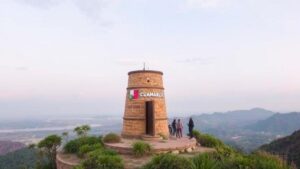How volcanic activity has preserved ancient tunnel systems and artifacts.
How Volcanic Activity Has Preserved Ancient Tunnel Systems and Artifacts
Volcanic activity has played a critical role in the preservation of ancient civilizations, particularly through the creation of natural barriers and the deposits of volcanic ash. This phenomenon has not only protected structures and artifacts from the ravages of time but has also provided archaeologists and historians with invaluable insights into past cultures. This article explores specific examples, the mechanisms behind this preservation, and its implications for our understanding of human history.
The Mechanisms of Preservation
Volcanic eruptions release large amounts of ash and lava into the environment. When these materials settle, they create an anaerobic environment that can inhibit the decay of organic materials. This preservation can occur in several ways:
- Smothering: Volcanic ash can bury artifacts and structures, protecting them from weathering and human interference.
- Cooling: In cases where lava flows cool rapidly, they can encase items like tools and pottery in solid rock, preserving their shapes and details.
- Humidity Control: The minerals in volcanic ash can create a moisture-retentive environment that helps preserve organic materials.
Case Study: Pompeii
One of the most famous examples of volcanic preservation is the ancient city of Pompeii, which was buried under 13 to 20 feet of volcanic ash and pumice after the eruption of Mount Vesuvius in 79 AD. The city remained largely undisturbed for nearly 1,700 years until its rediscovery in the 18th century.
Preserved Structures and Artifacts
The layers of ash preserved a remarkable number of structures, including:
- Residential buildings with intricate frescoes and mosaics.
- Public baths with sophisticated plumbing systems.
- Tragic remnants of daily life, including food, tools, and even the plaster casts of the victims.
These discoveries have provided crucial insights into Roman life, social structure, and architecture. Also, the detailed frescoes have allowed art historians to study the evolution of Roman art in a well-preserved context.
Case Study: Herculaneum
Another site, Herculaneum, also near Mount Vesuvius, offers a different perspective on volcanic preservation. Unlike Pompeii, Herculaneum was preserved by a pyroclastic flow, which carbonized organic materials rather than burying them. This has allowed for the preservation of wooden furniture, textiles, and even scrolls from the Library of Herculaneum, predating other literary documents.
The Importance of Herculaneums Preservation
The preservation methods at Herculaneum have provided a unique glimpse into the everyday lives of its residents. Scholars have been able to analyze:
- Advanced cooking techniques demonstrated by preserved kitchen tools.
- Daily routines suggested by the arrangement of rooms and possessions.
- Intellectual pursuits highlighted by the papyrus scrolls, some of which contain works of Epicurus.
Global Examples of Volcanic Preservation
Beyond Italy, there are other instances where volcanic activity has contributed to the preservation of historical sites:
- Teotihuacan, Mexico: The ancient city, known for its massive pyramids, is covered by a layer of volcanic material that has helped protect it from erosion.
- Mount St. Helens, USA: After its eruption in 1980, the layered deposits have provided insights into prehistoric human activities in the region.
The Role of Volcanic Ash in Archaeology
Archaeologists often use volcanic ash as a dating tool. The layer of ash can be correlated with known historical eruptions, allowing researchers to establish timelines for the structures and artifacts found beneath it. This technique has been essential in piecing together the histories of numerous ancient civilizations.
Conclusion
The relationship between volcanic activity and the preservation of ancient artifacts and structures is a testament to natures ability to safeguard human history. Through events such as the eruptions of Mount Vesuvius, we have gained living illustrations of past cultures, their daily lives, and their artistic endeavors. As volcanic sites continue to be explored, they promise to reveal further secrets and enrich our understanding of historical human activity.
Actionable Takeaways
For those interested in archaeology or history, consider the following:
- Visit preservation sites like Pompeii or Herculaneum to gain firsthand insight into ancient civilizations.
- Follow current research initiatives focused on volcanic sites to understand ongoing discoveries.
- Engage with documentaries and literature exploring volcanic activity and its impact on human history.
By delving into these dramatic intersections of geological forces and human history, we can appreciate the profound ways in which past events continue to inform the present and shape our understanding of the world.



